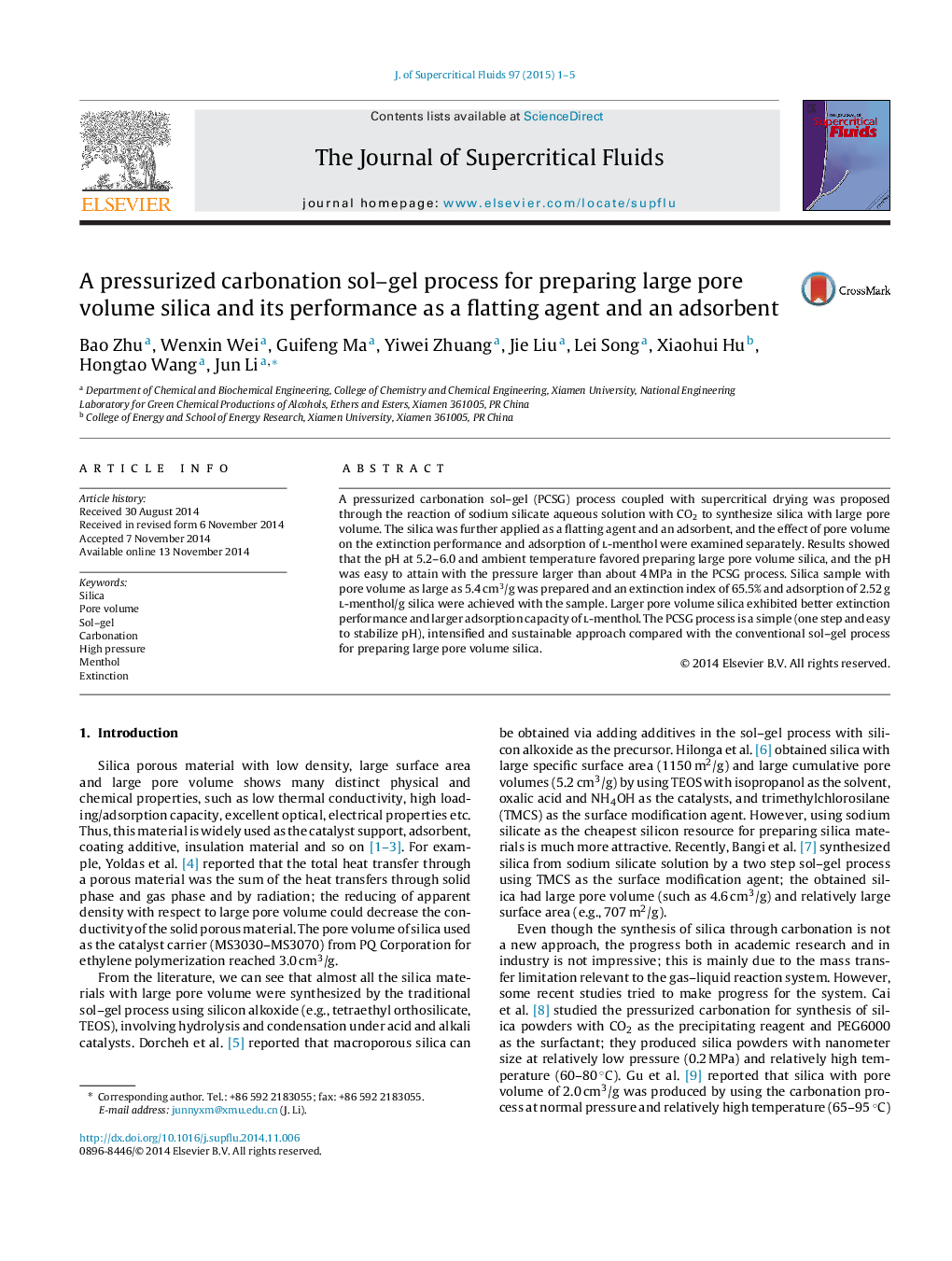| Article ID | Journal | Published Year | Pages | File Type |
|---|---|---|---|---|
| 230347 | The Journal of Supercritical Fluids | 2015 | 5 Pages |
•A pressurized carbonation sol–gel process was proposed.•The pH at 5.2–6.0 easily stabilized by pressure was a key factor.•Silica with a pore volume of 5.4 cm3/g was achieved from sodium silicate.•The pore volume played a predominant role on the adsorption and extinction effect.
A pressurized carbonation sol–gel (PCSG) process coupled with supercritical drying was proposed through the reaction of sodium silicate aqueous solution with CO2 to synthesize silica with large pore volume. The silica was further applied as a flatting agent and an adsorbent, and the effect of pore volume on the extinction performance and adsorption of l-menthol were examined separately. Results showed that the pH at 5.2–6.0 and ambient temperature favored preparing large pore volume silica, and the pH was easy to attain with the pressure larger than about 4 MPa in the PCSG process. Silica sample with pore volume as large as 5.4 cm3/g was prepared and an extinction index of 65.5% and adsorption of 2.52 g l-menthol/g silica were achieved with the sample. Larger pore volume silica exhibited better extinction performance and larger adsorption capacity of l-menthol. The PCSG process is a simple (one step and easy to stabilize pH), intensified and sustainable approach compared with the conventional sol–gel process for preparing large pore volume silica.
Graphical abstractFigure optionsDownload full-size imageDownload as PowerPoint slide
